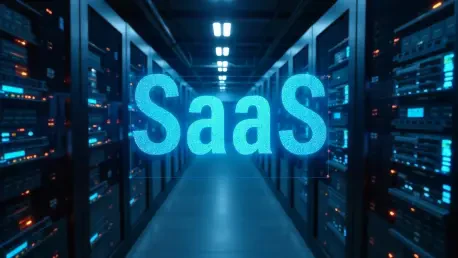Listen to the Article
In today’s SaaS industry, change occurs at exponential rates. While SaaS vendors have sprinkled AI on top of existing products as “nice-to-have” features for years, times are different now. Today, SaaS offerings are expected to be AI-native, designed with AI models, agents, and predictive systems embedded into the core architecture.
This hasn’t happened by accident. Vendors are simply responding to new customer demands for software that anticipates needs, makes decisions, and automates routine actions. Let’s explore the key details you need to be aware of to navigate this new landscape with success.
What “AI-Native” Actually Means
AI-native refers to technology that was designed with AI from the start; it is intrinsically and entirely powered by AI. How can you tell if a product is AI-native? Let’s take a look:
Architecture-first design: Where data pipelines, APIs, and infrastructure are purpose-built for supporting AI models.
AI-driven workflows: Instead of static rules, workflows are flexible, predictive, and constantly evolving.
Agents and automation as core features: Human expertise is unnecessary; intelligent agents handle routine tasks and trigger integrations across tools.
Alignment with AI economics: AI workloads are expensive and variable, meaning pricing for AI-native software is usage-based, hybrid, or outcome-based.
The term AI-native is flanked by several related concepts. AI-enabled refers to tools that would function without AI; it’s simply an enhancement. Next, AI-powered speaks to a product that’s built on traditional architecture, but AI is used to make existing features smarter and faster. Lastly, AI-driven means that intelligent capabilities actively shape how the tool works; for example, a platform that recommends actions or automates some workflows, but the AI is layered on top of existing SaaS infrastructure.
Here are a few short analogies to further clarify the differences:
AI-enabled
This is like adding a GPS system to your car: It helps you use the car more efficiently, but it’s not central to its functionality.
AI-powered
This is similar to a hybrid vehicle: An electric engine contributes to efficient and sustainable driving, but the gas engine does most of the heavy lifting.
AI-driven
You can liken this to autopilot on a plane. While the plane is built specifically for humans to fly it, the autopilot system adds an extra layer that handles most of the flying when turned on.
AI-native
Compare this to a modern drone: These are designed primarily to fly themselves with minimal or no human oversight.
In short, AI-native SaaS is not just software that uses touches of AI. It is AI, designed with intelligence, automation, and agility, and every layer is built to support that.
Compute Costs
Unlike traditional SaaS, where marginal costs are near-zero once all the infrastructure is set up, the pricing of AI-native applications is highly variable. More importantly, AI inference and training demand significant compute and resources, and because customers use AI in different ways, costs are liable to swing dramatically. Today’s SaaS vendors respond to these demands by embracing dynamic pricing strategies, investing more in a behind-the-scenes race for low-cost, high-value products, and providing deeper cost transparency to appease customer expectations.
Zylo reports that in 2025, businesses spent around $400,000 on AI-native applications, demonstrating a 75% year-over-year increase. It’s reasonable to assume that AI costs will continue growing as the technology continues its upward trajectory in popularity.
Pressure on Legacy SaaS Players
All of this growth and evolution in the SaaS industry puts pressure on legacy players, who are struggling to incorporate AI-native capabilities into their offerings, originally designed for static, rule-based workflows.
Monolithic architectures, “per seat” pricing models, and AI-first competition require incumbents to implement major transformation initiatives just to stay on par with modern, AI-native challengers, who are scaling their businesses faster and at lower costs.
Implications for the Next 2–3 Years
Given the pace of SaaS transformation in recent years, buyers are increasingly discerning. Generally speaking, prospective customers now view AI capabilities as integral to the product’s core functionality. Despite low customer satisfaction with current AI implementations, AI-first platforms still have an opportunity to gain the approval of the ever-growing base of SaaS buyers.
The recent emergence of agentic AI adds more to consider when thinking about the future of AI-native SaaS applications. Intelligent software agents proactively execute tasks, make informed decisions, and adapt to changing conditions with minimal human oversight.
This represents a shift in AI assistants from simple tools to collaborative partners, promising a bright future for AI-native SaaS vendors that capitalize on the opportunity.
What Your Software Needs to be AI-Native
If you don’t already have the right infrastructure, you’ll need to design a microservices architecture that enables AI components to scale on their own and seamlessly integrate with each other. Here, data is a top priority, and it is treated as such with robust pipelines for ongoing ingestion, cleaning, and processing.
With real-time inference capabilities, the system can learn from incidents and potential improvements to respond instantly. Additionally, a model orchestration layer improves responsiveness by selecting and fine-tuning AI models for particular tasks and applications.
Arguably, the most foundational aspects of AI-native SaaS apps are AI operations and continuous learning capabilities. These features enable feedback loops that allow systems to learn from past interactions, while performance monitoring tracks accuracy, potential bias, latency, and inference costs.
In AI-native applications, product design and user interfaces are more oriented towards conversational experiences. Additionally, billing and revenue operations feature as a product, with real-time dashboards that display consumption and costs.
Finally, trust, security, and compliance are critical for ensuring strong data privacy, explainability, and regulatory adherence to emerging AI frameworks and laws. To cap it off, there’s also a non-technical aspect to address: a cultural and talent shift. With openness to experimentation and expertise in the form of AI engineers, MLOps, product design, and UX professionals, you’ll have the final piece of the puzzle in the journey towards AI-native SaaS.
In Conclusion
AI-native SaaS is not just a passing trend; it’s the next frontier in software conception, building, and delivery. Buyers’ growing expectations for intelligence software can’t be met by offerings that simply add AI as an afterthought: These products will inevitably be sidelined as dated and ineffective in today’s advanced software landscape. The real question is not whether your software uses AI, but whether it was born for it.









